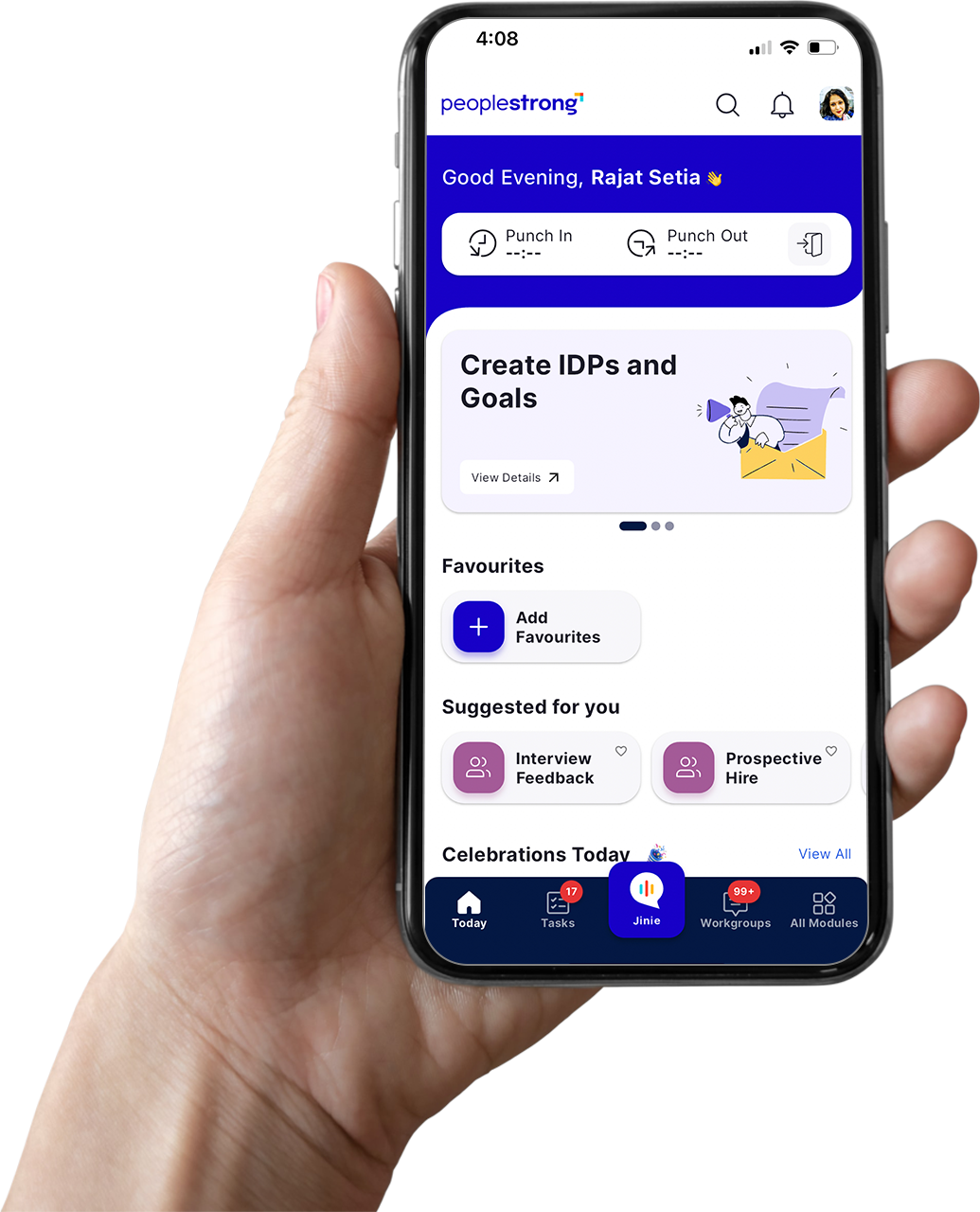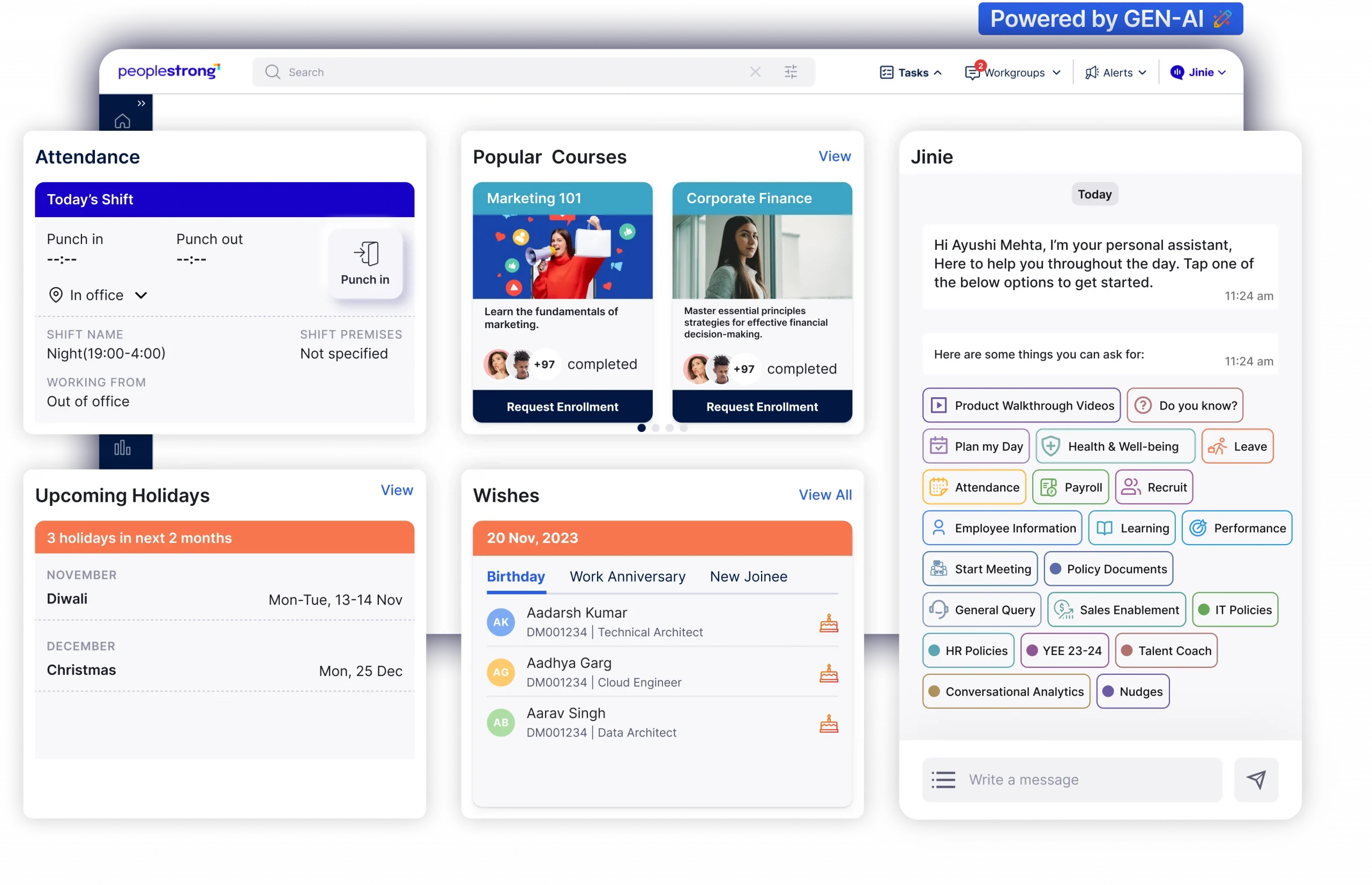Absenteeism can be a silent productivity killer. In fact, a report by Teamsense suggests that unplanned absences can lead to an estimated 40% loss in productivity!
Absenteeism is often attributed to an employee’s behaviour or attitude. It is usually assumed that the employee is lazy, unmotivated, disrespectful, or simply disinterested in their work.
More often than not, however, absenteeism is a result of the surroundings and not just the individual—factors like workplace culture, peer dynamics, and office politics. High absenteeism can be a result of a lack of motivation caused by a disconnect from the company’s vision and personal goals or due to deeper issues like burnout.
Additionally, the post-pandemic ‘new normal’ has brought about fresh challenges. After months of remote work, many employees are struggling to readjust to being back in the office, which is contributing to higher rates of absenteeism.
For managers and HR professionals aiming to reduce absenteeism and encourage a more reliable and engaged workforce, knowing the underlying causes of absenteeism is key to implementing effective solutions. The way to quantify absenteeism is through a metric called the absenteeism rate.
What Is Absenteeism And ‘Absenteeism (Absentee) Rate’?
Absenteeism is a term coined to describe an employee’s habitual, unplanned absence from the workplace. This includes being late, leaving early, and taking long breaks during work hours. Absenteeism is typically measured using the absenteeism rate, which is calculated by dividing the total number of days lost due to absenteeism by the total number of workdays multiplied by 100 to get a percentage.
Unlike planned leaves, absenteeism is disruptive—it leads to incomplete work and late deliveries. Planned (or informed emergency) leaves are generally not considered when measuring absenteeism because there are continuity plans in place for these situations, such as completing tasks ahead of time or having a colleague cover the workload.
They are not disruptive and allow the workflow to proceed smoothly, so they can be exempted. However, these absences can also be included in the calculation depending on how stringent you want the metric to be.
Calculating The Absenteeism Rate
To manage absenteeism effectively, it is important to quantify it using the absenteeism rate. By consistently tracking attendance, defining the calculation period, and applying a simple formula, businesses can gain valuable insights into patterns of absenteeism and take steps to address underlying issues.
Let’s take a look at the steps that need to be followed to calculate the absenteeism rate at an organization:
1. Track Attendance

The first step in calculating the absenteeism rate is tracking employee attendance. This can be achieved through biometric scanners, ID card systems, and other methods.
Using technology like attendance management systems can ensure accuracy and help track break times by requiring employees to swipe their cards to exit and re-enter the work bay. With an attendance tracker in place, you will have the data needed to calculate the absenteeism rate.
2. Define The Period For Calculation
Before calculating the absenteeism rate, define the timeframe for the calculation.
If you intend to include all absences and not just unplanned ones, it’s more fair to select a longer timeframe, as everyone occasionally takes time off for personal reasons. A short timeframe could unfairly penalize those on leave during that period.
However, if you focus only on unplanned or unexcused absences (which is the ideal method), you can choose either a short or long timeframe.
3. Use The Formula
The formula is quite simple:
Absenteeism Rate = ((Number of Unexcused Absences) / Total Time Period) x 100
We’re assuming you’re only considering unexcused absences and not planned ones.
For example, if an employee took five days off in three months (ninety days), the absenteeism rate would be:
(5/90)x100 = 5.55%
Having understood how to calculate the absenteeism rate, let’s examine the common reasons for workplace absenteeism and explore effective tips for mitigating these reasons.
Reasons For Absenteeism
1. Planned Absence
The first type of absence you will notice in the workplace is planned (or emergency) leave. These can be vacations, scheduled medical appointments, or unforeseen sick leaves. These can be either included or excluded from absenteeism rate calculations.
Including them provides a comprehensive view of overall absences, while excluding them offers a clearer focus on unplanned absenteeism. Either way, these are not something to worry about as long as they are not frequent and other performance parameters are being met.
2. Workplace Culture
Absenteeism is influenced by the environment—the workplace culture, which is shaped by both management practices and peer interactions. A culture that fosters a strong work ethic and creates a positive environment will result in employees being present and on time willingly.
On the other hand, a toxic environment marked by poor management, office politics, and bad peer interactions will lead to increased absences. A toxic environment makes employees feel disengaged and unfairly treated, which can drive up unplanned absences.
Effective management and a positive peer culture are essential in promoting a reliable and supportive work environment.
3. Policies, Or A Lack Thereof
Workplace policies can significantly affect absenteeism. Poorly strategised policies, such as not providing leave on celebratory days or lacking flexibility in leave options, can negatively impact employee morale and lead to higher absenteeism.
On the other hand, well-structured leave policies that accommodate employees’ needs and promote work-life balance can reduce unplanned absences and improve the absenteeism rate.
A thoughtful approach to policy development is crucial in supporting employee well-being and maintaining a positive absenteeism rate.
4. Unclear Vision & Path
A lack of vision within the organization can also result in absenteeism. When employees do not have a clear direction for their work or career growth, they may lack motivation and engagement. Without a sense of purpose or a clear career path, employees are less likely to feel committed and driven to show up consistently.
Providing a clear vision and opportunities for professional growth will motivate employees and reduce absenteeism by creating a more engaged and dedicated workforce.
Tips for Reducing Absenteeism
Promote A Healthy Workplace Culture
A positive workplace culture reduces absenteeism and improves employee engagement by improving their overall physical, mental, and emotional well-being.
There are a couple of aspects management can look into:
- Make room for open communication through one-on-one meetings
- Recognize, reward, and celebrate achievements
- Value and respect each employee (after all, you have hired them)
- Implement wellness programs like retreats
- Offer flexible work arrangements and a clear leave policy
- Create opportunities for professional and personal growth
By creating a culture that prioritizes employee well-being and satisfaction, you can minimize absenteeism and create a more committed and productive workforce.
Set Policies That Work For Both The Company And Employees
Developing policies that balance the needs of both the company and its employees is important for managing absenteeism effectively. Start by creating clear, fair, and flexible leave policies that accommodate various types of absences, including personal, medical, and family-related leave. Make sure these policies are communicated transparently and applied fairly to all employees.
When possible, involve employees in the policy-making process to address their concerns and gain their buy-in. For example, if the team collectively agrees on a nine-to-five workday policy, they cannot argue against it later.
Review and update policies regularly to ensure they align with evolving employee needs and organizational goals. Implementing a fair and supportive approach to policy development not only helps reduce absenteeism but also enhances overall employee satisfaction and engagement.
Suggested Read:
26 Essential HR Policies Every Organization Needs
Define A Clear Path For Each Employee
Setting a clear career path for each employee will motivate them to be present and productive. Set individual goals that align with both the employee’s career aspirations and the company’s objectives. When an employee knows, with absolute clarity, what the reward will be, they will be driven to achieve it.
There are a couple of measures management can take:
- Conduct regular performance reviews and give constructive feedback
- Provide opportunities for skill development through training programs, workshops, and on-the-job learning experiences
- Encourage open dialogue about career aspirations
- Offer mentorship to guide employees in achieving their professional goals
- Set clear, achievable goals
- Recognize and reward progress
- Promote (designation, responsibilities, and compensation) regularly
By defining a clear career trajectory and demonstrating a commitment to their growth, you can cultivate a sense of purpose and engagement, which in turn can lead to improved attendance and overall job satisfaction.
Final Word
Employee absenteeism is a multifaceted issue that significantly impacts an organization’s productivity and workplace culture. Calculating the absenteeism rate is therefore necessary.
By doing so, businesses gain valuable insights into attendance patterns and can identify underlying causes that may contribute to frequent absences. This metric helps in assessing current workforce engagement and serves as a benchmark for improvement.
Effective absenteeism management involves accurately calculating the absenteeism rate and then investigating its root cause. It requires a proactive approach, including promoting open communication, improving employee well-being, and implementing supportive policies.
By investing in strategies to reduce absenteeism, organizations can enhance employee satisfaction, improve overall morale, and ultimately achieve better operational outcomes.
Looking to effectively manage leaves and absences without micro-managing your workforce? Check out PeopleStrong’s attendance management system for a hassle-free experience!










